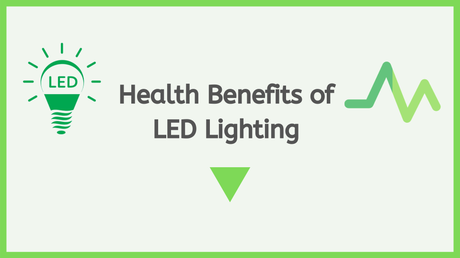
When it comes to energy efficiency, durability and performance, LED lights are the best option. Yet another area of advantage of LED lighting over traditional incandescent and fluorescent lighting pertains to health.
Here's what you need to know about the health benefits of LED lighting -
1. Reduce headaches
Traditional fluorescent bulbs flicker a lot, cause strain in the eye, and contribute to age-related degeneration. Compared to these bulbs LED lighting flickers less. This means LEDs don't impact those who suffer from migraines and headaches.
Due to their similarity to natural light, LEDs help to ease headaches for people who spend most of their time indoors.
2. LED lighting balances circadian rhythm
The circadian rhythm, a roughly 24 hour cycle driven by a circadian click, affects biological processes like the sleep/wake cycle, hormone secretion and body temperature. Recent development in LED lighting technology allows LEDs to mimic natural light and helps to regulate a healthy circadian rhythm.
LEDs could reduce the risk of sleep disorders, sleep deprivation or insomnia. So, swap your traditional fluorescents lights and enjoy the LED's benefit of balancing your circadian rhythm.
3. Improve your learning performance and productivity
Research has found that when LED lights are installed in a learning environment, there is an increase learning performance. This makes them a worthwhile investment for educational institutes, assisting students to succeed. Likewise, organisations opting for LEDs in working areas increased the productivity levels of their employees. Some studies have found that workers who work under LED lightning improved their cognitive function, allowing better performance in the workplace.
4. No harmful toxins
Traditional fluorescent and incandescent light bulbs contain various levels of mercury. Mercury has toxic effects, even a small amount from a single HPS bulb can cause serious health problems for our nervous and digestive systems, skin, lungs and eyes. They are also difficult to dispose of safely.
On the contrary, LEDs are durable and do not contain mercury vapour or other chemicals, making it safer replacement in your home or workplace. As the LED lightings don't have any exposure to mercury or produce no UV radiation, they are more secure to use. They are constructed using no toxic materials, which means you can dispose of them safely after they reach at the end of their life.
5. Reduced heat
LED lights do not produce a lot of heat when compared to traditional lighting. Even after they're on for long hours, they remain at room temperature. LED lights are safer to handle and don't carry the risk of burns or accidental fires.
6. Treatment of seasonal affective disorder (SAD)
Light therapy (also known as phototherapy) is a safe, natural and cost-efficient treatment for SAD, a type of seasonal depression. When you are in light therapy, you are required to work near a device called a light therapy box. The box gives off the bright light that mimics natural outdoor light. Light therapy affects brain chemicals that are linked to mood and sleep, and thus ease SAD symptoms.
7. Versatility
If you need to use lights for specific lighting purpose, LEDs could be a better option as you can tweak the colour and intensity, the way you want. Moreover, you can control them by using motion sensors and putting on timers whenever needed, which means LEDs have more versatility. They are significantly helpful for reducing injuries that commonly occurs because of the hands-on work with the traditional lighting fixtures. On the contrary, with the remote management facility, you will be able to change the direction of the LEDs easily.
8. Improved colour rendering
The Colour Rendering Index (CRI) score is a measurement ranged from 0 to 100 scale to assess how the light source shows object colors "naturally" when compared to a familiar basis of reference, either incandescent light or daylight.

This is done accurately based on how the LED's light matches with a reference source of light.
Here is the rating scale of a CRI table:
A standard HPS bulb generally produces illumination with a CRI less than 30 on the CRI chart. This makes it harder for workers to identify colours on hazmat placards, labels, wires and so on, all of which depend upon colour coding of safety. Meanwhile, industrial LEDs produce more illumination with a CRI of 70 or greater. This means they offer more natural colours, and more closely mimic daylight. LEDs providing adequate illumination and improve colour perception in the workplace, ensuring safety.
In the above, household and industrial LED lighting is proven as essential in terms of their capability of providing long-term health and safety for yours and industry workers.

